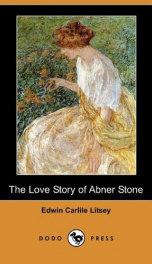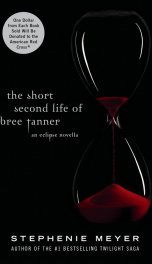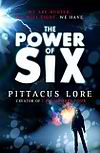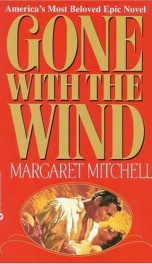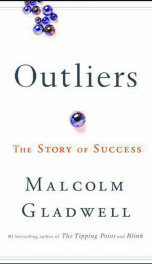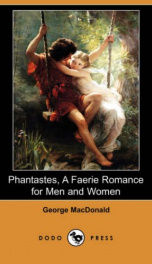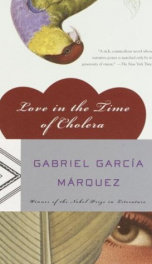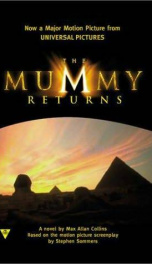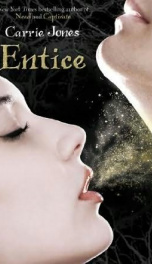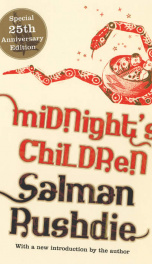Atkinson William Walker

William Walker Atkinson (December 5, 1862 – November 22, 1932) was an attorney, merchant, publisher, and author, as well as an occultist and an American pioneer of the New Thought movement. He is also known to have been the author of the pseudonymous works attributed to Theron Q. Dumont and Yogi Ramacharaka.[1] Due in part to Atkinson's intense personal secrecy and extensive use of pseudonyms, he is now largely forgotten, despite having obtained mention in past editions of Who's Who in America, Religious Leaders of America, and several similar publications—and having written more than 100 books in the last 30 years of his life. His works have remained in print more or less continuously since 1900.[1][2] William Walker Atkinson was born in Baltimore, Maryland on December 5, 1862,[2] to William and Emma Atkinson. He began his working life as a grocer at 15 years old, probably helping his father. He married Margret Foster Black of Beverley, New Jersey, in October 1889 and they had two children. The first probably died young. The second later married and had two daughters. Atkinson pursued a business career from 1882 onwards and in 1894 he was admitted as an attorney to the Bar of Pennsylvania. While he gained much material success in his profession as a lawyer, the stress and over-strain eventually took its toll, and during this time he experienced a complete physical and mental breakdown, and financial disaster. He looked for healing and in the late 1880s he found it with New Thought and later attributed to the application of the principles of New Thought his health, mental vigor and material prosperity. Some time after his healing, Atkinson began to write articles on the truths he felt he had discovered, which were then known as Mental Science. In 1889, an article by him entitled "A Mental Science Catechism," appeared in Charles Fillmore's new periodical, Modern Thought. By the early 1890s Chicago had become a major centre for New Thought, mainly through the work of Emma Curtis Hopkins, and Atkinson decided to move there. Once in the city, he became an active promoter of the movement as an editor and author. He was responsible for publishing the magazines Suggestion (1900-1901), New Thought (1901-1905) and Advanced Thought (1906 - 1916). In 1900 Atkinson worked as an associate editor of Suggestion, a New Thought Journal, and wrote his probable first book, Thought-Force in Business and Everyday Life, being a series of lessons in personal magnetism, psychic influence, thought-force, concentration, will-power, and practical mental science. He then met Sydney Flower, a well-known New Thought publisher and businessman, and teamed up with him. In December, 1901 he assumed editorship of Flower's popular New Thought magazine, a post which he held until 1905. During these years he built for himself an enduring place in the hearts of its readers. Article after article flowed from his pen. Meanwhile he also founded his own Psychic Club and the so-called "Atkinson School of Mental Science". Both were located in the same building as Flower's Psychic Research and New Thought Publishing Company. Throughout his subsequent career, Atkinson wrote and published under his own name and many pseudonyms. It is not known whether he ever acknowledged authorship of these pseudonymous works, but all of the supposedly independent authors whose writings are now credited to Atkinson were linked to one another by virtue of the fact that their works were released by a series of publishing houses with shared addresses and they also wrote for a series of magazines with a shared roster of authors. Atkinson was the editor of all of those magazines and his pseudonymous authors acted first as "contributors" to the periodicals, and were then spun off into their own book-writing careers—with most of their books being released by Atkinson's own publishing houses. One key to unravelling this tangled web of pseudonyms is found in "Advanced Thought" magazine, billed as "A Journal of The New Thought, Practical Psychology, Yogi Philosophy, Constructive Occultism, Metaphysical Healing, Etc." This magazine, edited by Atkinson, advertised articles by Atkinson, Yogi Ramacharaka, and Theron Q. Dumont—the latter two being pseudonyms of Atkinson—and it had the same address as The Yogi Publishing Society, which published the works attributed to Yogi Ramacharaka. Advanced Thought magazine also carried articles by Swami Bhakta Vishita, but when it came time for Vishita's writings to be collected in book form, they were not published by the Yogi Publishing Society. Instead they were published by The Advanced Thought Publishing Co., the same house that brought out the Theron Q. Dumont books—and published Advanced Thought magazine. In the 1890s, Atkinson had become interested in Hinduism and after 1900 he devoted a great deal of effort to the diffusion of yoga and Oriental occultism in the West. It is unclear at this late date whether he actually ever converted to any form of Hindu religion, or merely wished to write on the subject. If he did convert, he left no record of the event. According to unverifiable sources, while Atkinson was in Chicago at the World's Columbian Exposition in 1893, he met one Baba Bharata, a pupil of the late Indian mystic Yogi Ramacharaka (1799 - c.1893). As the story goes, Bharata had become acquainted with Atkinson's writings after arriving in America, the two men shared similar ideas, and so they decided to collaborate. While editing New Thought magazine, it is claimed, Atkinson co-wrote with Bharata a series of books which they attributed to Bharata's teacher, Yogi Ramacharaka. This story cannot be verified and—like the "official" biography that falsely claimed Atkinson was an "English author" -- it may be a fabrication. No record exists in India of a Yogi Ramacharaka, nor is there evidence in America of the immigration of a Baba Bharata. Furthermore, although Atkinson may have travelled to Chicago to visit the 1892 - 1893 World's Columbian Exposition, where the authentic Indian yogi Swami Vivekananda attracted enthusiastic audiences, he is only known to have taken up residence in Chicago around 1900 and to have passed the Illinois Bar Examination in 1903. Atkinson's claim to have an Indian co-author was actually not unusual among the New Thought and New Age writers of his era. As Carl T. Jackson made clear in his 1975 article The New Thought Movement and the Nineteenth Century Discovery of Oriental Philosophy,[3] Atkinson was not alone in embracing a vaguely exotic "orientalism" as a running theme in his writing, nor in crediting Hindus, Buddhists, or Sikhs with the possession of special knowledge and secret techniques of clairvoyance, spiritual development, sexual energy, health, or longevity. The way had been paved in the mid to late 19th century by Paschal Beverly Randolph, who wrote in his books Eulis and Seership that he had been taught the mysteries of mirror scrying by the deposed Indian Maharajah Dalip Singh. Randolph was known for embroidering the truth when it came to his own autobiography (he claimed that his mother Flora Randolph, an African American woman from Virginia, who died when he was eleven years old, had been a foreign princess) but he was actually telling the truth—or something very close to it, according to his biographer John Patrick Deveney—when he said that he had met the Maharajah in Europe and had learned from him the proper way to use both polished gemstones and Indian "bhattah mirrors" in divination.[4] After Randolph's death in 1875, the floodgates opened, and from the 1890s until well into the 1950s, the West was inundated by a tide of all-seeing, all-knowing, all-telling swamis, yogis, fakirs, and mahatmas. Some of these representatives from the East, like Paramahansa Yogananda, were genuine teachers who represented known lineages of Indian and Asian spiritual and philosophical tradition. Others, such as the so-called "blind albino seeress from Ceylon," Millie Lammar, and Claude Alexander "The Crystal Seer" were vaudeville and stage mentalists who dressed in oriental garments. The Russian-born founder of Theosophy, Helena Petrovna Blavatsky, had her invisible teachers, including the mysterious Himalayan "master" Koot Hoomi, while her one-time disciple, the Anglo-American esotericist Alice Bailey said that the co-author of her teachings was a Tibetan named "Djwal Khul". The British occultist Aleister Crowley published an English adaptation of the I Ching under the Chinese pseudonym "Ko Yuen" and Cyril Henry Hoskin, a British-born plumber's son, briefly convinced the world that he was both a Tibetan lama named "T. Lobsang Rampa" and the lama's literary agent, a Chinese man named "Doctor Carl Kuon Suo." In any case, with or without a co-author, Atkinson started writing a series of books under the name Yogi Ramacharaka in 1903, ultimately releasing more than a dozen titles under this pseudonym. The Ramacharaka books were published by the Yogi Publication Society in Chicago and reached more people than Atkinson's New Thought works did. In fact, all of his books on yoga are still in print today. Atkinson apparently enjoyed the idea of writing as a Hindu so much that he created two more Indian personas, Swami Bhakta Vishita and Swami Panchadasi. Strangely, neither of these identities wrote on Hinduism. Their material was for the most part concerned with the arts of divination and mediumship, including "oriental" forms of clairvoyance and seership. Of the two, Swami Bhakta Vishita was by far the more popular, and with more than 30 titles to his credit, he eventually outsold even Yogi Ramacharaka. During the 1910s, Atkinson put his attention into another pseudonym, that of Theron Q. Dumont. This entity was supposed to be French, and his works, written in English and published in Chicago, combined an interest in New Thought with ideas about the training of the will, memory enhancement, and personal magnetism. In 1903, the same year that he began his writing career as Yogi Ramacharaka, Atkinson was admitted to the Bar of Illinois. Perhaps it was a desire to protect his ongoing career as a lawyer that led him to adopt so many pseudonyms—but if so, he left no written account documenting such a motivation.
do you like this author?
What readers are saying
What do you think? Write your own comment on this book!
write a commentWhat readers are saying
What do you think? Write your own comment on this author!
write a commentBook list

Reincarnation and the Law of KarmaA Study of the Old-New World-Doctrine of Rebirth,and Spiritual Cause and Effect
Series:
Unknown
Year:
Unknown
Raiting:
3/5
Show more
add to favoritesadd In favorites

A Series of Lessons in Gnani Yoga
The Yoga of Wisdom
Series:
Unknown
Year:
Unknown
Raiting:
4.5/5
Show more
add to favoritesadd In favorites
Book list

Reincarnation and the Law of KarmaA Study of the Old-New World-Doctrine of Rebirth,and Spiritual Cause and Effect
Series:
Unknown
Year:
Unknown
Raiting:
3/5
Show more
add to favoritesadd In favorites

A Series of Lessons in Gnani Yoga
The Yoga of Wisdom
Series:
Unknown
Year:
Unknown
Raiting:
4.5/5
Show more
add to favoritesadd In favorites

Mystic Christianity
Or,The Inner Teachings of the Master
Series:
Unknown
Year:
Unknown
Raiting:
3/5
Show more
add to favoritesadd In favorites
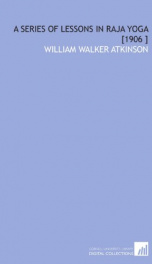
A Series of Lessons in Raja Yoga
Series:
Unknown
Year:
Unknown
Raiting:
5/5
Raja Yoga is centered around using techniques such as meditation, retention of breath, and concentration to achieve the main goal of absorption into the cosmos.
A number of mental exercises and affirmations lie in the heart of this book, though only indirectly related to traditional yogic practice. The series of lessons, offered here, deal human mental abilities, helping to understand the human psyche and spirituality.
This is a work by William Walker Atkinson, an American author, as well as an occultist and pioneer of the New Thought movement.
Show more
add to favoritesadd In favorites
A number of mental exercises and affirmations lie in the heart of this book, though only indirectly related to traditional yogic practice. The series of lessons, offered here, deal human mental abilities, helping to understand the human psyche and spirituality.
This is a work by William Walker Atkinson, an American author, as well as an occultist and pioneer of the New Thought movement.
Show more
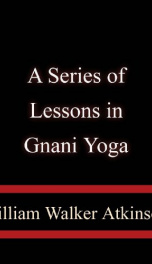
A Series of Lessons in Gnani Yoga
Series:
Unknown
Year:
Unknown
Raiting:
3.5/5
William Walker Atkinson, the 19th020th centuries’ author, as well as an occultist and an American pioneer of the New Thought movement. During the last 30 years of his life he wrote more than 100 works, often under pseudonyms, Yogi Ramacharaka being one of them. Here he offers the teachings of Gnani Yoga, or "the yoga of wisdom." The book contains 12 lessons, including omnipresent life, the creative will, cosmic evolution, the ascent of man, spiritual evolution, the law of karma and others.
Show more
add to favoritesadd In favorites
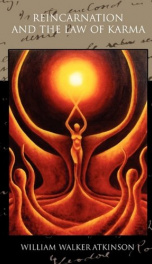
Reincarnation and the Law of Karma
Series:
Unknown
Year:
Unknown
Raiting:
4/5
This volume recounts a theory of rebirth and the principles of spiritual cause and effect. The author study traces the belief in the theory of reincarnation in different cultures and cast light upon the principles that carry this concept through thousands of generations.A fascinating and insightful document by William Walker Atkinson (1862 –1932), an attorney, merchant, publisher, and author, as well as an occultist and an American pioneer of the New Thought movement.
Show more
add to favoritesadd In favorites

Mystic Christianity
Series:
Unknown
Year:
Unknown
Raiting:
2.5/5
A book devoted to the Christianity as religion describing its values, main believes and some mysteries of its origin and formation. Mystic Christianity is recommended for everyone interested in religion and its problems.
Show more
add to favoritesadd In favorites
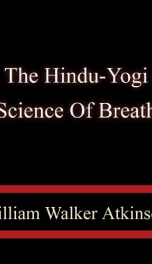
The Hindu-Yogi Science Of Breath
Series:
Unknown
Year:
Unknown
Raiting:
1/5
The book examines the exoteric theory of breath, methods of breathing and respiration, its physiological effects, ways to acquire, including exercises. It coves also the phenomena of rhythmic, psychic and spiritual breathing.
By an American occultist and a pioneer of the New Thought movement William Walker Atkinson.
Show more
add to favoritesadd In favorites
By an American occultist and a pioneer of the New Thought movement William Walker Atkinson.
Show more
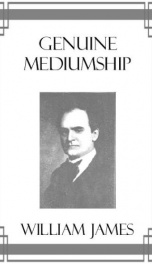
Genuine Mediumship or The Invisible Powers
Series:
Unknown
Year:
Unknown
Raiting:
4.5/5
Reprint of the 1919 book on psychic mediumship.
Show more
add to favoritesadd In favorites
What readers are saying
What do you think? Write your own comment on this author!
write a commentGenre
- Nonfiction / Philosophy
- Literature & Fiction / Classics
- Religion & Spirituality / Christianity / Christian Living
- Books / Atheism
- Books / Yoga
- Books / Great Britain / History / 1689-1714
- Health, Mind & Body / Self-Help / Personal Transformation
- Religion & Spirituality / Spirituality
- Books / Church of Scotland
if you like Atkinson William Walker try:
readers also enjoyed
What readers are saying
What do you think? Write your own comment on this author!
write a commentGenre
- Nonfiction / Philosophy
- Literature & Fiction / Classics
- Religion & Spirituality / Christianity / Christian Living
- Books / Atheism
- Books / Yoga
- Books / Great Britain / History / 1689-1714
- Health, Mind & Body / Self-Help / Personal Transformation
- Religion & Spirituality / Spirituality
- Books / Church of Scotland
if you like Atkinson William Walker try:
readers also enjoyed
Do you want to exchange books? It’s EASY!
Get registered and find other users who want to give their favourite books to good hands!
